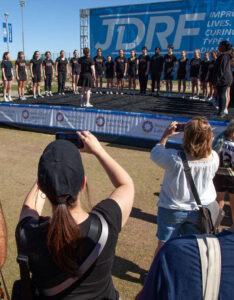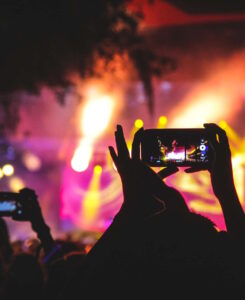
Integrating Social Media and Event Planning
Social media has become a crucial part of event planning and production, allowing planners and production companies to connect with attendees, promote their events, and increase engagement. Integrating social media into your event planning and production process can help you create an immersive and interactive experience for your attendees, while also promoting your brand and generating buzz. In this blog post, we’ll explore the best practices for social media integration at events, measuring the impact of social media at events, choosing the right platforms for social media integration, creating a social media strategy for events, and leveraging influencers for social media integration.
Choosing the Right Platforms for Social Media Integration
There are a variety of social media platforms available, each with its own unique audience and features. When choosing which platforms to use for your event, consider your target audience and your goals for social media engagement. Here are some popular platforms to consider:
1. Facebook
A popular platform with a broad audience, making it a good choice for events with a wide target audience.
2. Twitter
A platform for real-time conversations and updates, making it a good choice for events with frequent updates or live tweeting.
3. Instagram
A visually-focused platform, making it a good choice for events with strong visual elements or photo opportunities.
4. LinkedIn
A platform for professional networking and B2B marketing, making it a good choice for events focused on networking or professional development.
Creating a Social Media Strategy for Events
When it comes to social media integration for events, having a strategy is crucial. A social media strategy outlines the goals, objectives, and tactics that you will use to promote your event and engage with your audience. Here are some key steps to consider when creating a social media strategy for events:
1. Define your goals and objectives
Before you start planning your social media strategy, you need to define your goals and objectives. Are you looking to increase ticket sales, boost attendance, or generate brand awareness? Defining your goals and objectives will help you develop a more targeted and effective social media strategy.
2. Know your target audience
Understanding your target audience is essential to creating a successful social media strategy. What social media platforms do they use? What type of content do they engage with? Answering these questions will help you tailor your social media content to the preferences and behaviors of your audience.
3. Choose the right platforms
Once you understand your target audience, you can choose the social media platforms that are most relevant to them. Consider factors such as the demographics of each platform, the type of content that performs well on each platform, and your resources and capacity for managing multiple platforms.
4. Create a content plan
A content plan outlines the type of content you will post on social media, the frequency of posts, and the tone and messaging that will resonate with your target audience. A content plan can also help ensure that your social media activity is consistent and aligned with your overall event branding and messaging.
5. Engage with your audience
Social media is a two-way conversation, and engagement with your audience is critical to building relationships and increasing event participation. Respond to comments and messages promptly, and consider running contests or interactive campaigns to encourage engagement.
 Measuring the Impact of Social Media at Events
Measuring the Impact of Social Media at Events
Measuring the impact of your social media efforts is crucial to understanding the success of your event and improving your strategy for future events. Here are some metrics you can use to measure the impact of social media at your events:
1. Reach
The number of people who see your social media posts, including your followers and anyone who interacts with your posts.
2. Engagement
The number of people who interact with your social media posts, including likes, shares, comments, and mentions.
3. Click-through rate
The percentage of people who click on a link in your social media post and visit your website or landing page.
4. Conversion rate
The percentage of people who take a desired action, such as registering for your event or making a purchase, after clicking on a link in your social media post.
Leveraging Influencers for Social Media Integration
Influencers are individuals who have a significant social media following can be a highly effective way to increase event awareness, reach new audiences, and drive engagement. Here are some key steps to consider when leveraging influencers for social media integration:
1. Identify relevant influencers
Look for influencers who are relevant to your event and have a following that aligns with your target audience. Tools such as BuzzSumo and Followerwonk can help you identify influencers by keyword, topic, or social media platform.
2. Develop a partnership strategy
Once you have identified relevant influencers, develop a partnership strategy that outlines how you will work together. Will they attend your event and share content in real-time, or will they promote your event through pre-event content? Clarifying these details upfront can help ensure a successful partnership.
3. Provide value to the influencer
Influencers are typically selective about the brands and events they partner with, so it’s essential to provide value to the influencer in exchange for their participation. This might include free tickets or access to VIP areas, exposure to your event audience, or compensation.
4. Amplify influencer content
Once your partnership is in place, amplify the influencer’s content by sharing it on your own social media channels, website, or email marketing campaigns. This can help increase the reach and impact of the influencer’s content and provide additional exposure for your event.
Best Practices for Social Media Integration at Events
Integrating social media into your event can be a powerful tool, but it’s important to do so strategically. Here are some best practices for social media integration at events:
1. Create a social media plan
Before your event, create a detailed social media plan that outlines the platforms you’ll be using, the types of content you’ll be sharing, and the hashtags you’ll be using. This will help you stay organized and ensure that your social media efforts are cohesive.
2. Use a social media management tool
Using a social media management tool can help you streamline your social media efforts, allowing you to schedule posts in advance and monitor engagement in real-time.
3. Promote your social media channels
Make sure to promote your social media channels on all event-related materials, including invitations, flyers, and signage. This will encourage attendees to engage with you on social media and help build your online presence.
4. Encourage live posting
Encourage attendees to post about your event in real-time by using event-specific hashtags and by creating social media walls or displays that showcase attendees’ posts.
In conclusion, social media integration has become a vital part of event planning and production. By incorporating social media into events, planners and production companies can enhance the overall attendee experience, increase engagement and brand awareness, and drive business growth. However, to make the most out of social media integration, it is essential to choose the right platforms, create a strategy, measure the impact, leverage influencers and follow best practices.
LET’S GET STARTED WITH YOUR EVENT
Quick Links


